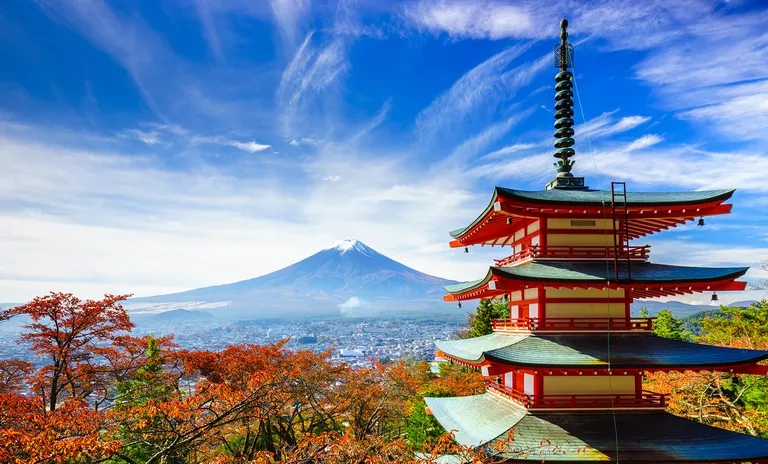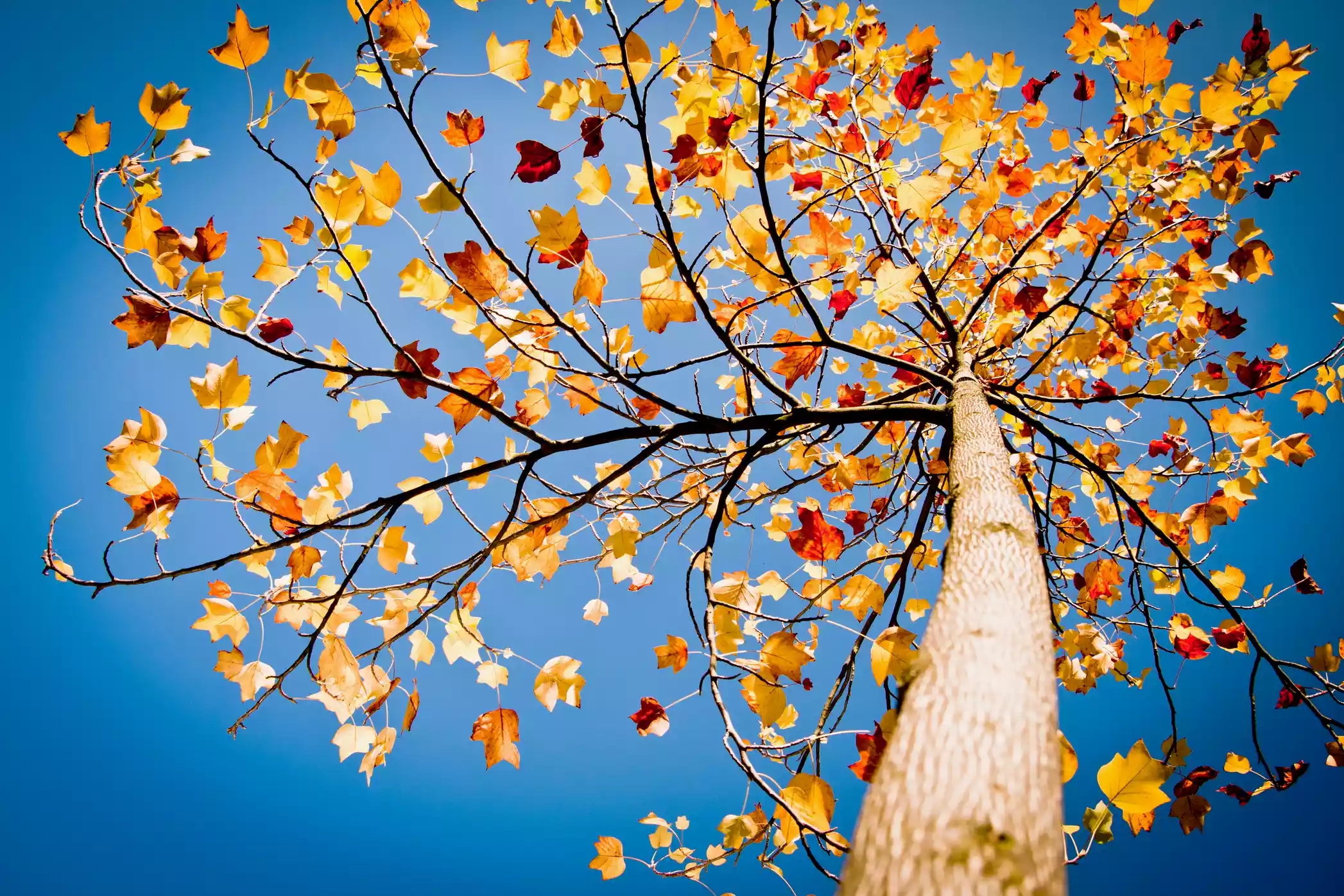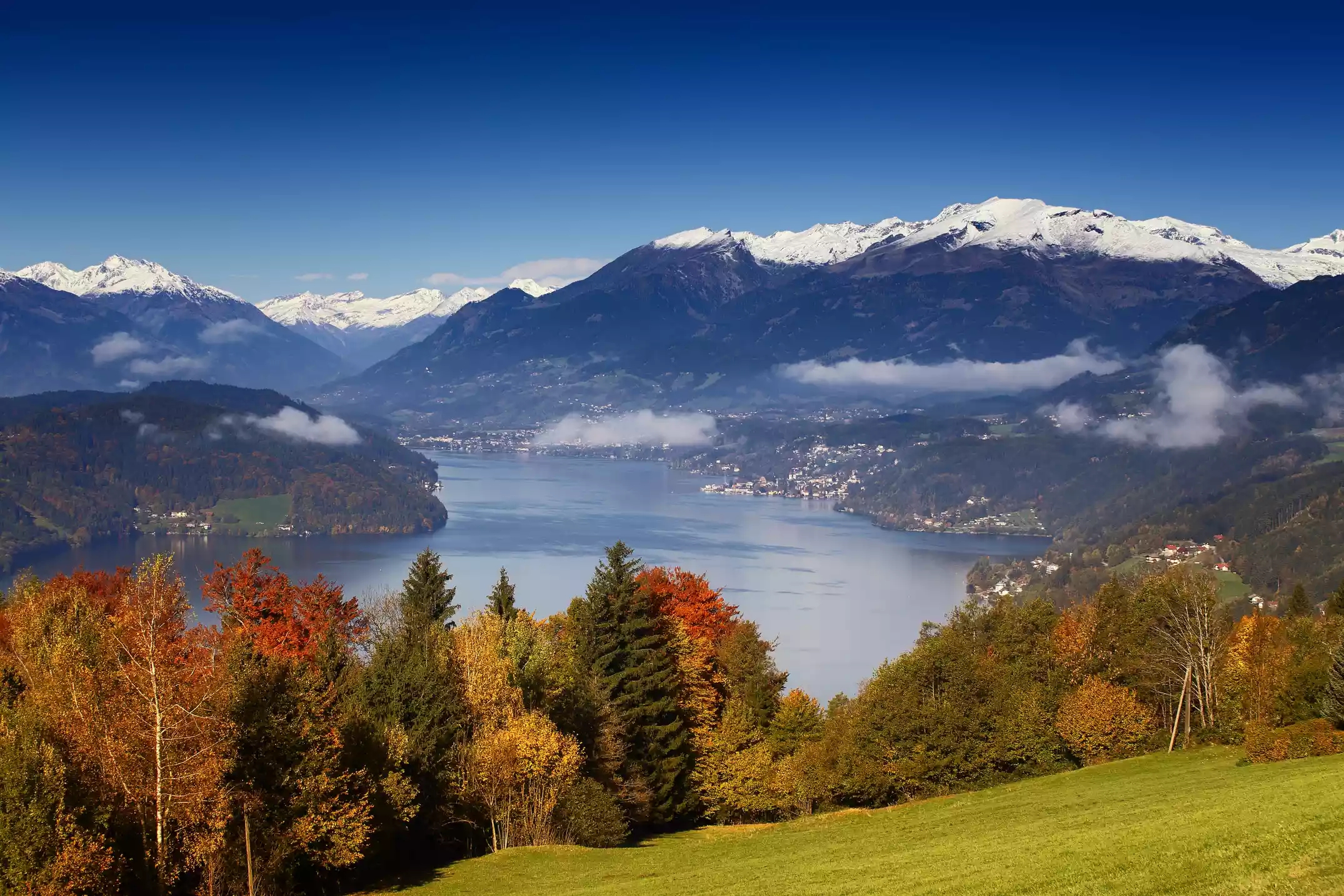秋天的天空为什么这么蓝?
秋天的天空为什么这么蓝?
The color of the leaves isn't the only thing that changes in autumn. Have you ever looked up on a crisp fall day and noticed how brilliant and clear the blue sky is? That's not just your imagination — the sky really is more blue, and all because of science.
树叶的颜色并不是秋天唯一会改变的东西。你是否曾在秋高气爽的时候抬头仰望,发现湛蓝的天空是如此的明亮和清澈?这不仅仅是你的想象——天空真的更蓝了,这是有科学依据的。
To understand why the sky is so especially vivid in autumn, you first need to understand why it's blue in the first place.
要理解为什么秋天的天空如此鲜艳,你首先需要理解为什么它是蓝色的。

Autumn color surrounds a pagoda in Fujiyoshida, Japan as Mount Fuji looms in the distance. (Photo: lkunl/Shutterstock)
"Why is the sky blue?" is a classic query posed most often by curious young children, and unlike the many other grand mysteries of our universe, we know the answer to this one, thanks to a gentleman named John William Strutt. This 19th-century physicist won a Nobel Prize in 1904 for discovering the element argon, but what really cemented Strutt's place in the history books is his discovery of Rayleigh scattering. Named for Strutt's inherited status as the third Baron of Rayleigh, this phenomenon explains how light scatters into different colors based on the molecular contents of the atmosphere.
“为什么天是蓝色的?”这是好奇的孩子们最常提出的一个经典问题,与宇宙中的其他许多重大谜团不同,多亏了一位名叫约翰·威廉·斯特拉特的先生,我们知道了这个问题的答案。这位19世纪的物理学家因发现氩气元素而在1904年获得了诺贝尔奖,但真正巩固了斯特拉特在历史书中的地位的是他对瑞利散射的发现。这一现象以斯特拉特继承的瑞利第三男爵的身份命名,解释了光线如何根据大气中的分子成分散射成不同的颜色。
Let's go over the basics of how blue skies work: Light from the sun is made up of many colors, which manifest in different wavelengths. For example, red light has the longest wavelength and, on the other end of the spectrum, violet and blue light have the shortest wavelengths. When light passes through the Earth's atmosphere, it comes up against thick layers of gas molecules and dust particles. These tiny atmospheric bits are closer in size to shorter wavelengths, which is why blue and violet light scatter more easily. The result is our beautiful blue sky.
让我们来了解一下蓝天是如何形成的:来自太阳的光是由多种颜色组成的,它们以不同的波长表现出来。例如,红光的波长最长,而在光谱的另一端,紫光和蓝光的波长最短。当光线穿过地球的大气层时,会碰到厚厚的气体分子和尘埃颗粒层。这些大气中的微小粒子在大小上更接近短波长,这就是为什么蓝光和紫光更容易散射的原因。结果就形成了我们美丽的蓝天。
But wait! It's important to mention that although we see a blue sky, the truth is that it's actually violet. The reason we perceive the sky as blue instead of violet is due to the physiology of our eyes, which are more sensitive to blue.
但是等等!值得一提的是,虽然我们看到的是蓝色的天空,但实际上它是紫色的。我们之所以认为天空是蓝色的,而不是紫色的,是因为我们眼睛的生理机能对蓝色更敏感。

Yellow and orange autumn leaves contrast against a bright blue sky. (Photo: nohanka/Shutterstock)
So now that we know why the sky is blue, it's time to go back to the original question — why does the sky appear extra blue as we descend deeper into autumn? There are several reasons for this.
所以现在我们知道了天空为什么是蓝色的,是时候回到最初的问题了——为什么随着秋天的深入天空会显得格外蓝?这有几个原因。
The sun is positioned lower in the sky.
太阳在天空中的位置较低。
As the days get shorter, the sun's path across the sky sinks lower to the horizon. This bumps up the amount of scattered blue light that reaches our eyes on the planet's surface.
随着白天变短,太阳穿过天空的路径在地平线上下降。这增加了到达地球表面我们眼睛的散射蓝光的数量。
Less humidity means less haze and clouds.
湿度越低,霾和云就越少。
As our summers continue to break soaring temperature records, there's something so comforting about the seasonal reprieve that autumn brings. Not only are temperatures milder, there's also less humidity across the board. Since the air isn't holding as much moisture, clouds don't form as easily and haze doesn't clog our urban centers. The result is a crystal clear view of the azure expanse above.
随着夏季气温不断刷新纪录,秋天带来的季节性缓解令人欣慰。不仅温度更温和,而且整体湿度也更低。因为空气中没有那么多的水分,云层就不会那么容易形成,雾霾也不会阻塞我们的城市中心。这样就可以清晰地看到上面蔚蓝的天空。
The warm hues of fall foliage naturally complement the blue sky.
秋叶的暖色调与蓝天相得益彰。

Clear autumn skies over Lake Millstatt in Austria. (Photo: Yauheni_M/Shutterstock)
If you've ever made a color wheel for an art class, you'll know that blues and oranges are complementary colors. As direct "opposites" of each other, the gold, orange and red leaves of autumn pop beautifully against the already brilliant blue sky.
如果你曾经在艺术课上做过色轮,你就会知道蓝色和橙色是互补色。秋天的金色、橙色和红色的树叶在已经灿烂湛蓝的天空的映衬下,显得格外美丽。
- 频道推荐
- |
- 全站推荐
- 推荐下载
- 网站推荐


















